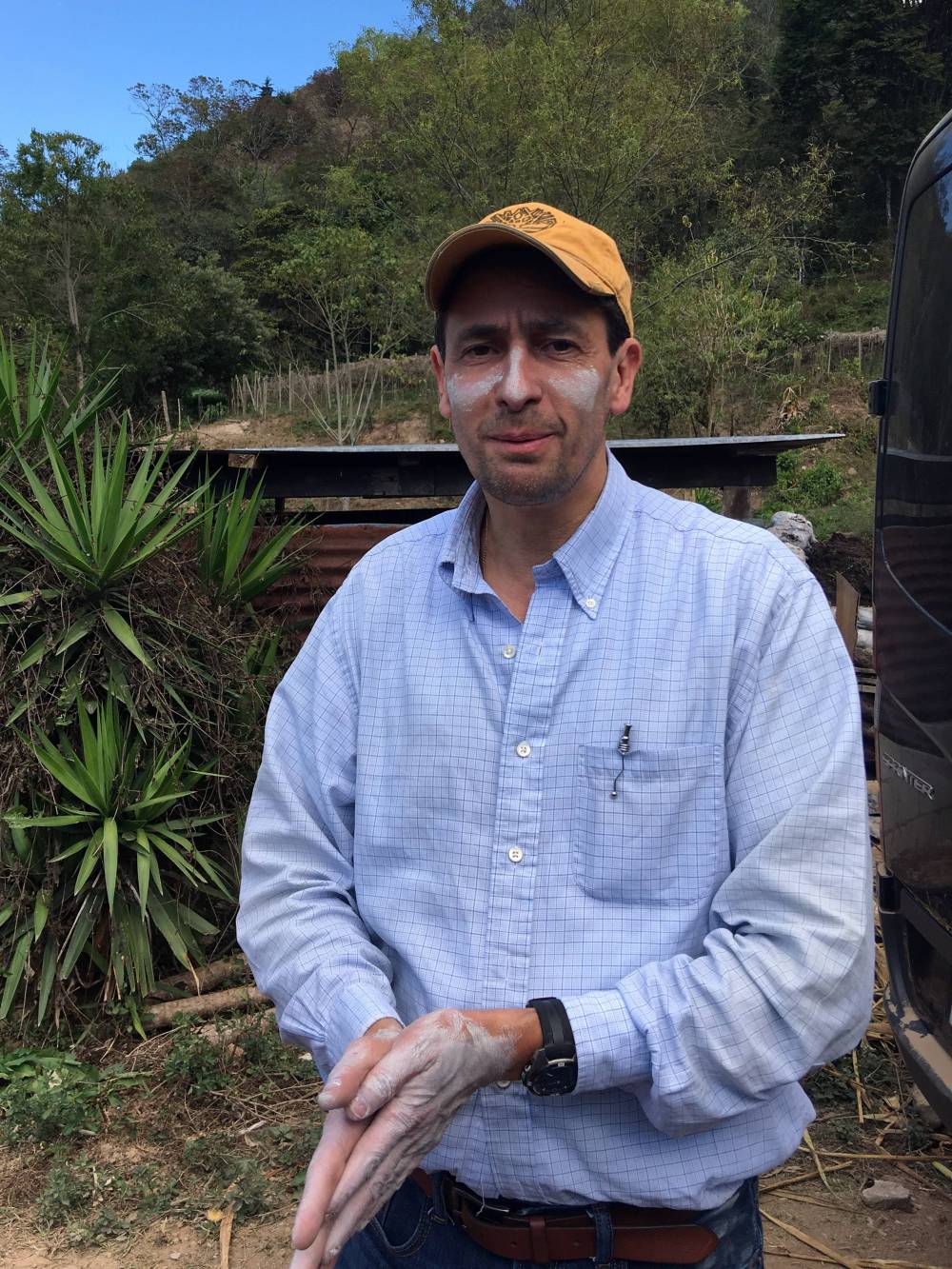Finca El Tambor
El Durazno, Palencia, Guatemala






Our days on the estate, the rediscovered coffee and the mine
Victor Calderon represents the 5th generation of coffee farmers.
El Tambor’s previous owner had converted the farm to coffee during the 1960s. As price volatility worsened during the late 1980s, he granted mineral rights to a mining company.
Throughout the 1990s, the farm was abandoned, until Victor bought the farm (2001).
Love for the earth and innovative ideas for turning clay into a resource







Coffee estate features
He sold his house and car in exchange for El Tambor and immediately set about renovating the coffee plots.
When coffee leaf rust became apparent, he was concerned about using the chemically based fungicides widely recommended. Realising that fungi favour acidic environments, he had tried several alkaline solutions to apply the plants. In his research he read that clay is very alkaline, and his thoughts returned to El Tambor’s mining history.
Mines leave a lot of clay and Victor suspected that this clay may provide just the solution to rust. He came to a unique recipe that has enabled to fight off coffee leaf rust with minimal environmental impact. This method is ecologically friendly and poses no threat to workers’ health.






How the company is structured and where the name comes from
All farm’s employees have permanent residence on the farm and 10% of the farm is given over to the workers to produce their own vegetables. Nearly half the farm has been left under forest.
El Tambor means ‘The Drum’: it is assumed that the name comes from the sounds of an underground river pounding under the ground, making a drum-like sound.
Some data
- Botanical varieties: Bourbon
- Processing: fully washed
- Harvest: December – April
- Drying: sun dried on patios
- Altitude: 1.676 – 1.860 m asl

